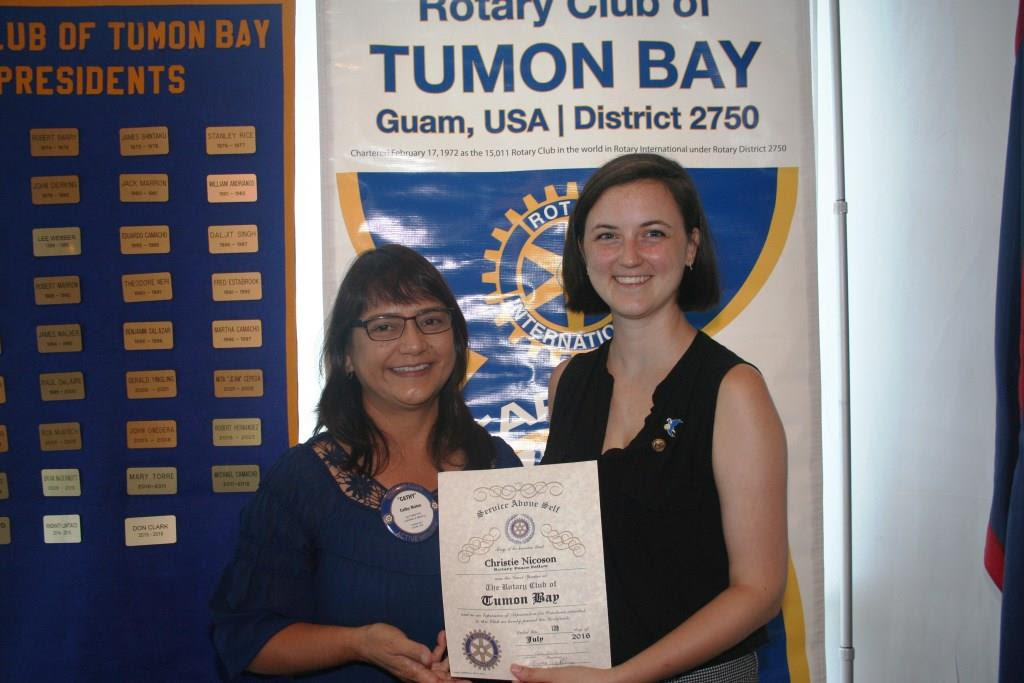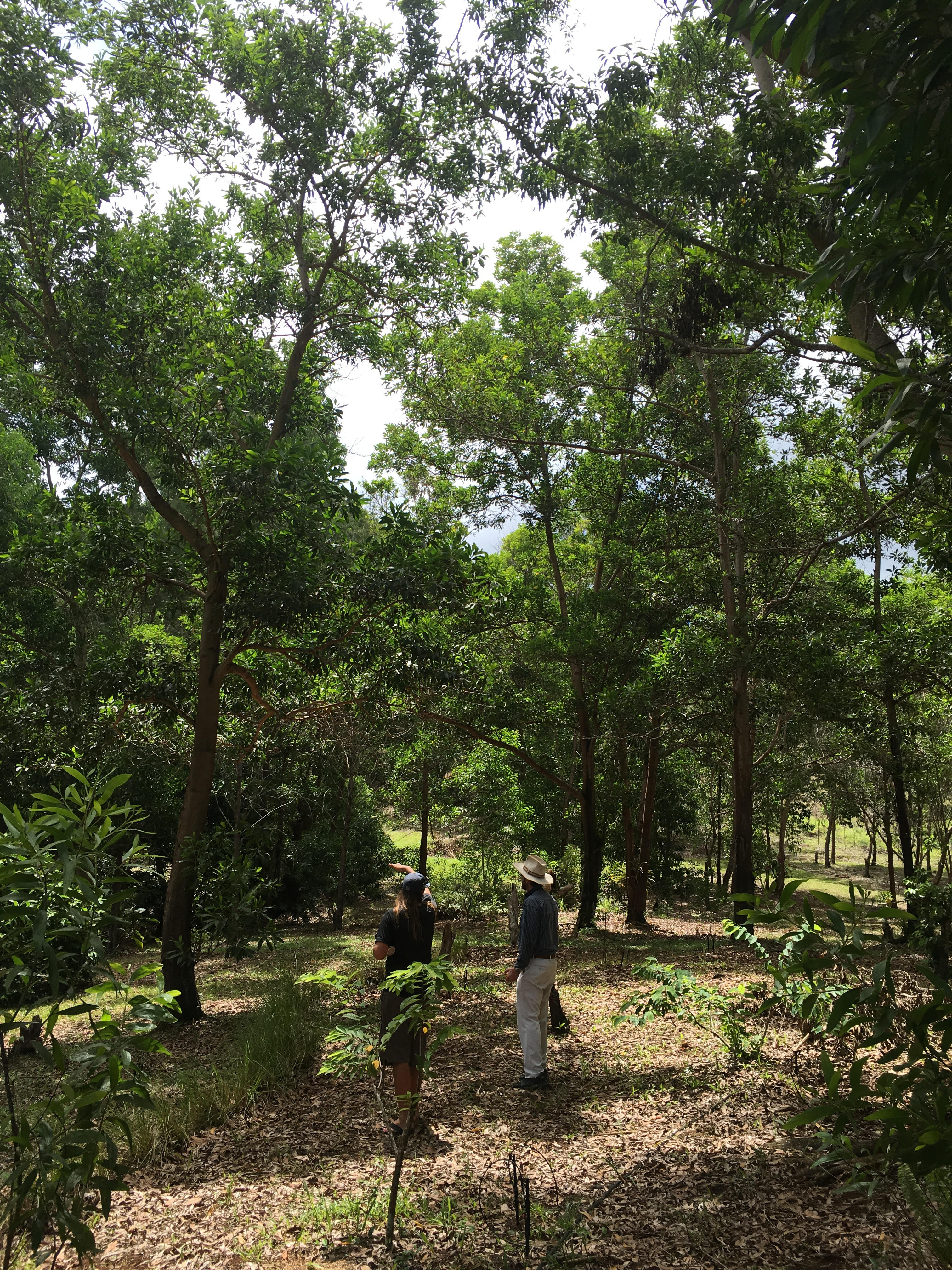Eating Local Food, Building Peace in Guam
By Christie Nicoson
Rotary Peace Fellow, Class XIV, Uppsala University
Food is one of the most essential parts of our daily lives. The Universal Declaration of Human Rights enshrines food as a basic right guaranteed to all people. Yet nearly one in nine people, 795 million worldwide, are unable to access enough food. As countries face increasing urban population growth and effects of climate change, demands on food systems will become even greater.

Rotary Club of Tumon Bay: Christie Nicoson and President of the Rotary Club of Tumon Bay, at a talk about Christie’s research on Food Security of Positive Peace in Guam.
Food is a powerful weapon; it can be used to deny people their most basic rights, stripping them of human dignity and spurring mass conflict. There is a term for these kinds of situations: “food insecurity.” The United Nations defines food security as existing when “all people, at all times, have physical, social, and economic access to sufficient, safe and nutritious food to meet their dietary needs and food preferences for an active and healthy life.” Because hunger is such an extreme threat, food has been at the center of many conflicts and even genocides. Dakota Indians in the United States, Armenians in the Ottoman Empire, Jews in ghettos during the Holocaust – all were deliberately starved. Today, roadblocks intentionally prevent food trucks from reaching entire cities in Syria and Iraq. Shortages, unequal distribution, and 600% price spikes of food in Venezuela is leading to massive protests and violence. But what if food could also be used for peace?
We often think of peace as existing in the absence of violence. But how might we define peace as the presence of something, rather than as an absence? “Positive peace,” a term developed by sociologist Johan Galtung, gives us a more dynamic perspective on peace. Positive peace exceeds the absence of violence; it exists when individuals and groups have the institutions and norms to achieve justice, fairness, and greater well-being of society. I wondered how food might play a role in this new view of positive peace. My questions brought me spend a summer on the island of Guam.
Guam, an island in the North Pacific, is a US territory and hosts a large military presence. Over 500 years of colonization, heavy modern militarization, and a recent overdependence on imports has left Guam food insecure. In 1940, subsistence agriculture supplied Guam with abundant food and sustainable livelihoods. However, after World War II, the import of processed foods became the norm. I was shocked to find myself on a lush island were stores sell bananas imported from South America, rather than grown down the street; local meat is completely absent in stores and restaurants; and even fish is often brought in from other countries. As a direct result of imports, farms have decreased from over 2,500 to less than 200, generations have been dependent on food subsidy programs, and rates of diseases such as obesity and diabetes have skyrocketed and now far exceed US averages.
Guam is not actively at war. Yet with so many people struggling to access nutritious food and sustain healthy lifestyles, positive peace is clearly a challenge.
The people of Guam are rising to meet this challenge by returning to what they know best: local food. Farmers who grow local food are using natural methods to protect the environment so that Guam will be able to produce food well into the future. Nonprofit organizations are encouraging people to eat local food to boost the local economy and build stronger, more self-reliant communities. Markets and restaurants are promoting local food to reverse the trend of increasing childhood obesity and diabetes. These local food initiatives are doing more than just producing food; they are changing what food is available, reshaping who has access to local food, and shifting diets and lifestyles. They are sewing the seeds of a more positive peace on Guam.
Food has the vast potential of doing more than nourishing our bodies; it has the power to build stronger, healthier societies. Food can be used not as a weapon, but as a tool for building sustainable peace, fostering norms of justice and well-being. As we see conflicts raging around the world and inequalities plaguing our communities at home, we must focus on the essentials. We must protect human rights that form the foundation for peaceful societies. We can start by focusing on what we grow in our fields and what we eat at our dinner table.
Christie Nicoson is a former World Without Genocide associate. She spent this past summer in Guam as part of her Rotary Peace Fellowship, a program that sponsors 50 master’s students annually to study peace and conflict at internationally renowned universities. Learn more at www.rotary.org/myrotary.
For the full report on the food security issue in Guam click here.




Leave a Comment